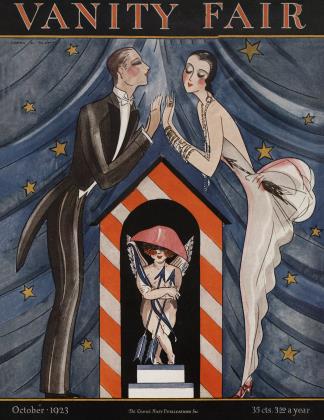Sign In to Your Account
Subscribers have complete access to the archive.
Sign In Not a Subscriber?Join NowEuropean Motoring
England's Grand Prix Victory and the Concours d'Elégance Exhibition Are Outstanding Events
C. S. BISS
THE long-awailcd British victory in the Grand Prix, the world's greatest automobile race, is now sufficiently, far in the past for us to see it in some sort of perspective. Although it would be unnatural for us to refrain from throwing our caps in the air, yet it is still necessary that we should look to the future.
When all is said, the victory of the British Sunbeams in the Grand Prix was a notable performance, in which the winners should have the salute of all good motorists the world over. To come in first, second and fourth in this historic event lends further luster to the Sunbeam achievement and to the excellent reputation this splendid British car bears for durability.
There is no harm in jointing out again the fallacy of the criticism that occurs to most of us when first considering such exhibitions. "What", says the plain man who owns a car, "have such things to do with me? I, who have never been on a racetrack, and to whom a car is simply a means of more or less speedy transport on business or pleasure, can have but little interest in racing cars."
THE reply is that these contests correspond to the first law of nature's laboratory—the survival of the fittest. It is here that new constructions are put to the real test, and where everything counts, whether it be engine, design, transmission, strength of materials, fuel, lubrication, tires or air resistance. Racing is the crucible in which the practicability and other advantages of new developments must prove their worth before being passed on to the public; notably such features as the front wheel drive, and its probable effects on body design, and the question of brakes.
The ordinary motorist has no need for a car that can maintain a terrifically high speed on a difficult triangular course. He does, however, want the benefits to be had of the lessons learned in building a car that can perform this stupendous task.
IF the winning Sunbeams were on the market, they would be called 15 h.p. models. Since they actually develop no h.p. they might well be termed 15-110 h.p. models. In fact, the other day, on the Brooklands racing track, this 15 h.p. car did 120 miles an hour. Any modern car should give about 100 per cent more power than is specified in the antiquated rating formula, but these little Grand Prix racers give about 600 per cent more power than their actual specifications call for. Manufacturers, therefore, have a useful reserve from which to select a proportion of engine power suitable to balance the demand of the public.
A very striking example, showing the benefits of road racing to the purchasing public, lies in the consideration of engine efficiency. Taking the same horse power developed in 190S engines and the 192.3 Grand Prix racing machines, there is a reduction in cubic capacity of about 87 per cent, while the horse power produced by the engines has increased 600 per cent. This reveals an almost incredible progress in engine design during the intervening years.
(Continued on page 90)
(Continued from page 88)
Another factor which enters largely into the success of the modern motor is the astonishing reduction in its weight, due to the use of new alloys and new principles. I think it is a fact that the weight of the piston and connecting rod of the winning Sunbeam is less than two pounds while, about fifteen years ago, the piston and connecting rod of a Grand Prix racer weighed over 26 pounds. This increased efficiency of the engine of today, with its greatly reduced weight, is only one of the inestimable benefits which the motoring public has received from the designing of cars for road racing.
I venture to suggest, however, that if the "powers that be" could fix ujxm an International Standard Chassis Grand Prix for, say, three to four hundred miles, and limited to engines purchasable by the public in standard cars, a race of this sort would teach us more than all these racing events put together, and go even further to help practical automobile development.
Accompanying this article are several photographs of the really remarkable cars displayed at the recent Concours d'Elegance in Paris. These pictures arrived too late to be included with our remarks about this interesting event last month. It will be remembered that we detected, in this mid-summer motor fashion show, a decided trend toward the streamlining of enclosed cars. The photographs supply ample proof of this tendency. Americans will be particularly interested in the glorification of the Ford car with a smart French body by a famous coachbuilder.
 View Full Issue
View Full Issue











Subscribers have complete access to the archive.
Sign In Not a Subscriber?Join Now